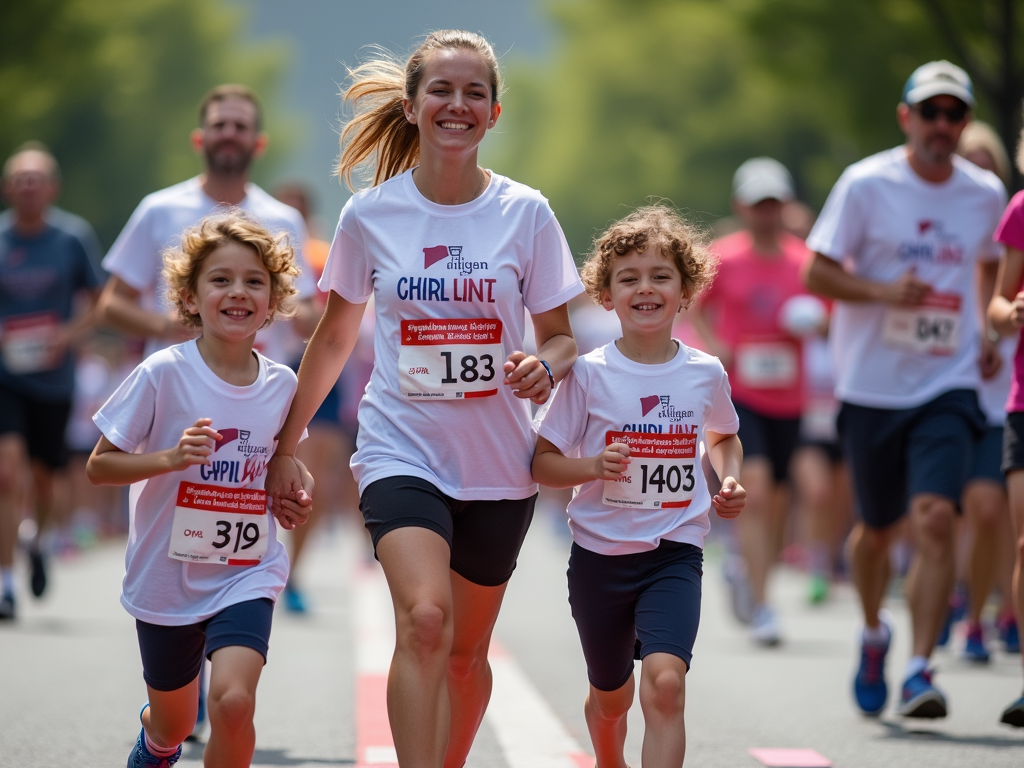In today's fast-paced world, finding time to connect as a family can be challenging. Wellness programs offer a unique solution by combining health benefits with opportunities for bonding. This article explores how these programs can strengthen family ties while promoting an active lifestyle for all ages.
The Power of Shared Wellness Activities
Wellness programs are more than just fitness routines; they're a gateway to stronger family relationships. When families engage in activities like hiking, cooking healthy meals, or practicing yoga together, they create shared experiences that foster communication and teamwork. These moments become the foundation for lasting memories and deeper connections.
Consider the Smith family, who started a weekly tradition of Sunday morning bike rides. What began as a way to get some exercise turned into a cherished ritual where they explore new trails, share stories, and support each other's fitness goals. This simple activity has not only improved their physical health but also strengthened their emotional bonds.

Tailoring Wellness Programs to Your Family
Every family is unique, and wellness programs should reflect that diversity. Whether you have toddlers, teenagers, or grandparents living with you, there's a way to make wellness inclusive for all.
- For families with young children: Focus on playful activities like dance parties or obstacle courses in the backyard.
- For families with teenagers: Try team sports or fitness challenges that appeal to their competitive spirit.
- For multigenerational families: Opt for low-impact activities like walking or tai chi that everyone can participate in safely.
The key is to choose activities that everyone enjoys and can do together. This ensures that wellness becomes a unifying force rather than a source of stress.
The Benefits of Physical Activity for All Ages
Physical activity is crucial for maintaining health at every stage of life. For children, it supports growth and development. For adults, it helps manage weight and reduce the risk of chronic diseases. For seniors, it can improve mobility and cognitive function.
But beyond individual benefits, exercising as a family amplifies these advantages. Studies show that families who are active together are more likely to stick to their fitness routines. Moreover, children who see their parents prioritizing health are more likely to adopt similar habits as they grow older.

Designing an Effective Family Exercise Plan
Creating a family exercise plan doesn't have to be complicated. Here's a simple step-by-step guide to get you started:
- Set collective goals: Discuss what each family member hopes to achieve, whether it's losing weight, building strength, or just having fun.
- Choose activities everyone enjoys: Make a list of potential activities and vote on favorites to ensure buy-in from all members.
- Schedule regular sessions: Treat family exercise time like any important appointment by blocking it out on the calendar.
- Mix it up: Vary the activities to keep things interesting and cater to different interests.
- Celebrate milestones: Acknowledge achievements, no matter how small, to keep motivation high.
Remember, the goal is to make exercise a positive, bonding experience, not a chore.
Nutrition: Fueling Family Wellness
Wellness isn't just about movement; it's also about what we eat. Cooking and eating together as a family can be a powerful way to promote healthy habits and strengthen bonds.
Try involving everyone in meal planning and preparation. Even young children can help wash vegetables or set the table. This not only teaches valuable life skills but also creates opportunities for conversation and collaboration.
Moreover, sharing meals allows families to model healthy eating behaviors. When parents choose nutritious options, children are more likely to follow suit.

Mental Health and Stress Management for Families
Wellness programs should also address mental and emotional well-being. Techniques like mindfulness, yoga, or even family therapy sessions can help manage stress and improve communication.
One effective practice is to incorporate a 'gratitude circle' into your routine, where each family member shares something they're thankful for. This simple act can shift focus from daily stressors to positive aspects of life, fostering a supportive family environment.
The Long-Term Benefits of an Active Lifestyle
Engaging in wellness activities as a family isn't just about immediate health benefits; it's an investment in your family's future. An active lifestyle can lead to:
- Increased longevity: Regular physical activity is linked to a longer, healthier life.
- Stronger relationships: Shared experiences create bonds that can withstand life's challenges.
- Better academic and professional performance: Exercise has been shown to improve cognitive function and productivity.
By prioritizing wellness now, you're setting the stage for a lifetime of health and happiness together.

Bringing It All Together
Wellness programs offer a multifaceted approach to strengthening family bonds. By integrating physical activity, nutrition, and mental health practices into your family routine, you create a holistic environment that nurtures both individual and collective well-being.
Start small, be consistent, and most importantly, have fun together. The journey to wellness is as much about the process as it is about the outcomes. As you embark on this path, you'll likely find that the greatest reward is the time spent together, growing healthier and closer as a family.
Discuss Here